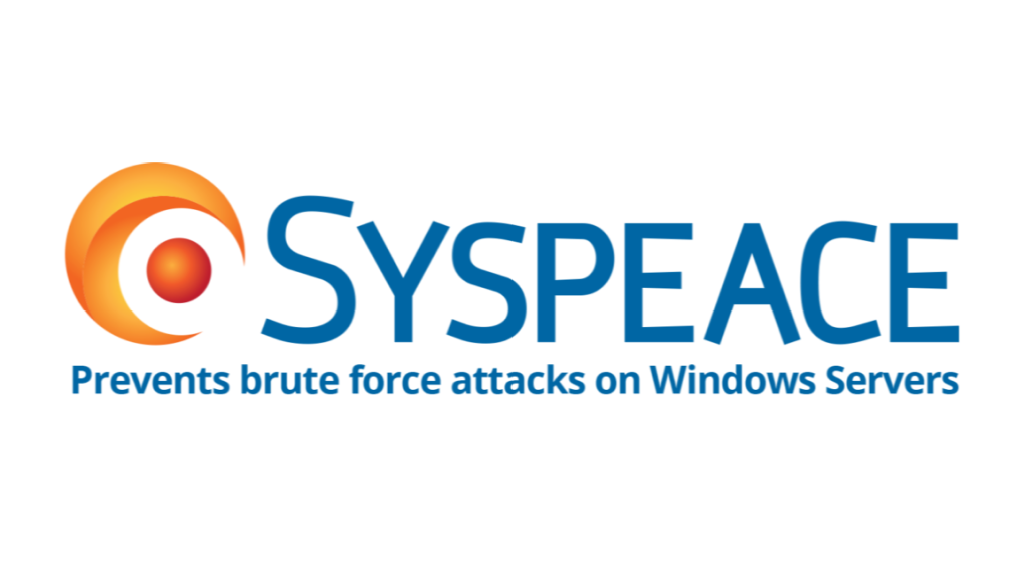3 Critical Operational Design Values to Run a Successful OPS Computer Center Business
When starting a building, fashion catalog, or other construction projects, it is easy to see the need for a conceptual design from the onset. However, regardless of its size, maturity, or industry, every business must have a foundational set of activities to achieve growth and success. These activities are called business operations. Developing suitable operational design values will directly transform how we fulfill our customers’ needs.
Whether we are just getting started or have been running OPS Computer Center, we need to design an operations plan that can help us stand out from the crowd, prepare against possible operational problems, and plan for the future.
We can always start the OPS Computer center before putting together that structured business operations plans. But once operational costs start rising at an alarming speed, we would have no choice but to reassess skill-sets, decommission inefficient applications, integrate disparate technologies, and streamline document processes to reduce operational costs. Even so, following this approach might place us in a perpetually reactive spot as we struggle to put out fires. Again, we might become stuck improving segments of our operations, thereby creating siloes without studying the bigger picture.
The reality is that our OPS Computer center business demands an operational design from the early stage in the business cycle. This will help us forecast growth and achieve higher returns of investment from the onset.
Importance of Operational Design Values
Operations design is all about establishing processes, systems, technological tools, rhythms, and templates for running any business daily.
Looking at these core areas, we can immediately see how having the correct operations design can transform our business. It will make it easier for us to find the right people with the proper skill-set to match our operational activities.
We can also create and execute strategic changes at any time. We can also ensure our teams have the correct tools for optimum productivity and efficiency. This will also streamline their workload so that they can focus on the most important things. Overall, we will be able to improve on the delivery of customer value.
But how do we put together the right business operations plan? Designing or rethinking our operations begins with documenting the most significant components of our operations, also called core business processes.
Core business processes are activities that define how our organization delivers direct customer value. Once we have defined those core processes, it would become easier to innovate and improve on all areas.
The right plan will cover the following areas:
- Organization: Our people, their skill-sets, reporting relationships, business units, functional roles, alongside our physical assets such as offices and data centers.
- Processes: the way our people work together, methodologies, and tools for working together to achieve pre-defined business objectives
- Technology: production technology, product technologies, communication equipment, computers, and software for our daily operations.
Looking at these critical areas, here are three crucial tips and factors to consider when setting up the best operational design values:
1. Automate As Much As Possible
Cloud platforms have taken away a great deal of pain manually managing and configuring hardware and software needed for applications to run. However, there are still some hardware management problems that may arise.
This is where we need to invest in automation, especially Infrastructure as a code (IaC), to efficiently reduce the manual effort required for IT resource management by implementing simple lines of code.
IaCs will streamline costs by alleviating the need to work with as many professionals for performing necessary tasks. We would build, maintain and efficiently run Computer center without siloes through manual processes, alarming expenses, and plenty of complexities.
Manual processes are slow and cause struggles in spikes in access, making us work desperately while trying to set up servers for managing loads. Again, many applications may remain offline without backup data centers and servers while we struggle to handle those loads. Therefore, IaC helps drive higher scalability and availability by enabling a quick setup of the complete Infrastructure by running scripts.
IaCs can also help us maintain visibility across servers, networks, and applications, track performance, and make strategic changes whenever needed. We can also avoid inconsistencies, which would have been unavoidable when deploying configurations manually.
How to make the best of automation
Yet, choosing the best IaCs such as Terraform, SaltStack, Puppet, Ansible and Chef depend on the complexity of tasks and available resources. For instance, even as we should consider using APIs to leverage as many automated tools as possible, our existing resources and coding language will affect our ability to choose.
For instance, some tools like Chef and Ansible use procedural style language, which means we have to write code specifying desired end state, and the tool ensures we receive that designed outcome.
In contrast, Terraform, and Puppet use declarative style to specify the desired end state, where we have to write codes for each step to reach that desired end state.
Those with a programming background will opt for Terraform while scripting aims towards Chef and Ansible.
Alternatively, we can choose pre-built automation scripts and pre-built programs provided by an IT Ops tool provider instead of building a custom API. But again, some tools are integration-rich and others integration-poor.
So, we need to carefully weigh our choices in terms of configuration, orchestration, and operations demand, alongside the level of complex tasks. If we also have legacy security tools and processes, we must manually check to see if the provisioned resources are operational and used by the correct applications. Manual checking is a confidence-building step, even as it demands plenty of iterations to tune our legacy security tools to IaC. Overall, we must consider security, governance, and complexities.
IaCs will reduce our management overhead by eliminating the need for multiple roles, but we must never forget that every tool has its set of capabilities and limitations. Careful evaluation of the strengths and weaknesses will help us make the best of automation and build an efficient and productive work environment.
2. Use PoLP – Principle Of Least Privilege
Security is another vital area we must never overlook regardless of the size of our workforce. We recommend starting with the Principle of least privilege (PoLP) as a part of a broader cybersecurity strategy.
PoLP is an information security concept in which users are given the minimum level of permissions or access to perform his/her job function. This does not apply to human access alone, but systems, applications, and connected devices.
The Principle of least privilege helps us build organizations centered on zero-trust for all users, whether inside or outside the organization’s perimeters. This cybersecurity practice can help protect privileged access to high-value data and assets. It can ensure that non-human tools and humans receive only the access they need and nothing more.
Effective least privilege enforcement provides a superb way to centrally manage and secure privileged credentials alongside adjustable controls for balancing compliance and cybersecurity requirements with operational and end-user needs. With PoLP, the benefits are enormous. First, it reduces cyberattack surfaces by making it difficult for cybercriminals to find channels to exploit privileged credentials. When we limit superuser and administrator privileges using PoLP, we can reduce the overall cyber attack surface.
Secondly, the limited access can provide opportunities to stop the spread of malware as quickly as possible whenever it occurs. Thirdly, removing that local administrator rights from business users will also reduce risks while enabling just-in-time privilege elevation based on policy, thereby helping end-users become productive, alongside reducing reliance on calling our support team.
Finally, it makes it easier to establish internal policies and meet all regulatory compliance requirements. PoLP will also provide avenues for a full audit of privileged activities and prevent malicious or unintentional damage to valuable systems.
Steps to implement PoLP
As said earlier, PoLP should be a part of a more extensive cybersecurity plan, but here are some critical steps to take:
- Audit the complete environment to discover privileged accounts, including access keys, passwords, hashes, SSH keys, password on endpoints, on-premise, in the cloud, and DevOps environments
- Get rid of unnecessary local administrator privileges and ensure humans and non-humans have the accurate access they need and nothing more.
- Isolate administrator accounts from standard accounts and isolate restricted user sessions.
- Secure and manage administrator account credentials in a digital vault.
- Rotate all administrator passwords after each use to invalidate credentials that keylogging software may have captured to reduce the risk of Pass-the-Hash.
- Maintain real-time monitoring of all activities connected to administrator accounts to detect and alert on anomalous activities quickly.
- Use just-in-time access elevation so that users have only access to run privilege commands or privileged access temporarily and as needed.
- Review all Cloud IAM permissions and entitlement in Cloud environments to remove excessive permissions regularly.
3. Patch on schedule
OPS Computer Center businesses, like other small and medium-sized businesses, often have limited IT support. Therefore it can be challenging to achieve seamless patch management. Yet, the numbers are against putting off patching for a long time.
Studies show that 57% of data breaches come from poor patch management. Even so, putting off patching creates the danger of missing out on key essential updates as they get lost along the road
Therefore, patching is a vital core process that ensures to keep our systems and applications running smoothly. When we don’t patch our machines, we are leaving them vulnerable to cyber-attacks.
Patching is more critical now that we have more workers working from home as hackers actively look for vulnerabilities in shared virtual private network (VPN) solutions.
Naturally, the average time to patch is 102 days, which might seem like a great window of time. But consider that new vulnerabilities can arise even days after patches are released. Then we must realize that the window of time is much smaller because recent studies show that attackers now begin working on looking for security loopholes as soon as patch updates arrive. Cybercriminals now have an enormous list of sophisticated tools in their favor, making it easier for them to quickly identify vulnerable systems and launch campaigns.
Tips for effective patch management
There is no doubt; patching can be a daunting process. But we have also outlined a few tips to make things easier:
- Create a patch management policy that outlines what will be patched and under specific conditions.
- Threat different types of patches differently. For instance, critical versus non-critical updates.
- Identify maintenance windows to plan to patch during periods with less traffic to minimize disruption
- Monitor for new patches and vulnerabilities, especially emergency patches.
- Don’t forget to have patch testing and create backups for easy rollback when necessary.
- Always validate successful deployment and monitor for performance or incompatibility problems. Also, document changes made through patching. This helps with the testing environment and can be used to discover any issues that come with patch deployment.
- Consider investing in a cloud-based automated patch management solution that allows us to automate patching for all third-party software and windows and ensure that patches are applied under the right conditions.
- Carry out a patch management audit regularly to discover failed or pending patches. We must also monitor continuously for performance or incompatibility issues. Sometimes, we can reach out to end-users for their help and feedback in these areas.
Concluding Thoughts
There is a significant risk of not putting in the time and energy to set up great operational design values. Lack of planning our operations brings the dangers of wasting time and carrying out common and repetitive tasks without the correct equipment. A strategic operations design will make it easier to adapt and reinvent to meet changing demands in a rapidly changing IT environment.
There’s also a greater danger of confusion ruling the work environment, leading to employee turnover and burnout. Using the best tools and process methodologies without a well-thought-out operational design system will also lead to failure. Therefore, our OPS Computer Center business demands clear and compelling operational design values to run like a well-oiled machine. This will transform our brand into an innovative and efficient organization with productive employees, satisfied customers, and excellent ROI.



